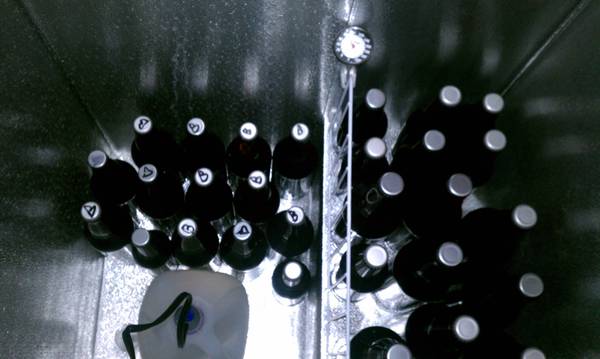I recently read "Brew Like a Monk" which inspired me to brew a Dubbel in the Trappist fashion. One of the things that is standard among Belgian breweries is the use of "warm rooms" to condition bottled beer. I live in Washington State where the daily highs are about 45 degrees Fahrenheit this time of year and in my brewing room the temperature is only about 62 degrees during the day. Here's my solution:


What you see (besides the beer bottles) is a gallon of water with an aquarium heater in it set to the max temperature of 88 degrees Fahrenheit. Because my chest freezer is so small it works really, really well. It's been more than 24 hours now and you can see the temperature is reading 78 degrees Fahrenheit.


What you see (besides the beer bottles) is a gallon of water with an aquarium heater in it set to the max temperature of 88 degrees Fahrenheit. Because my chest freezer is so small it works really, really well. It's been more than 24 hours now and you can see the temperature is reading 78 degrees Fahrenheit.


